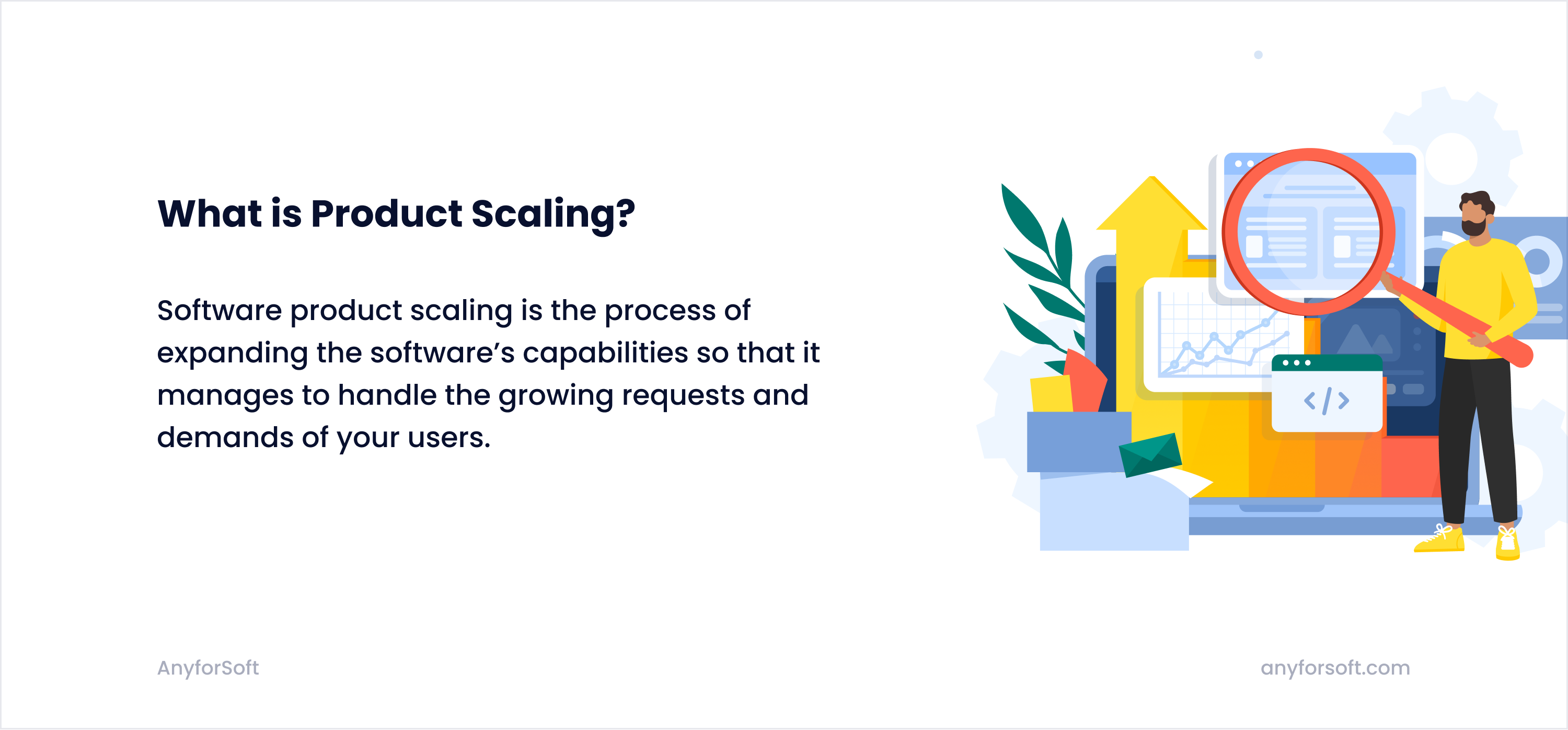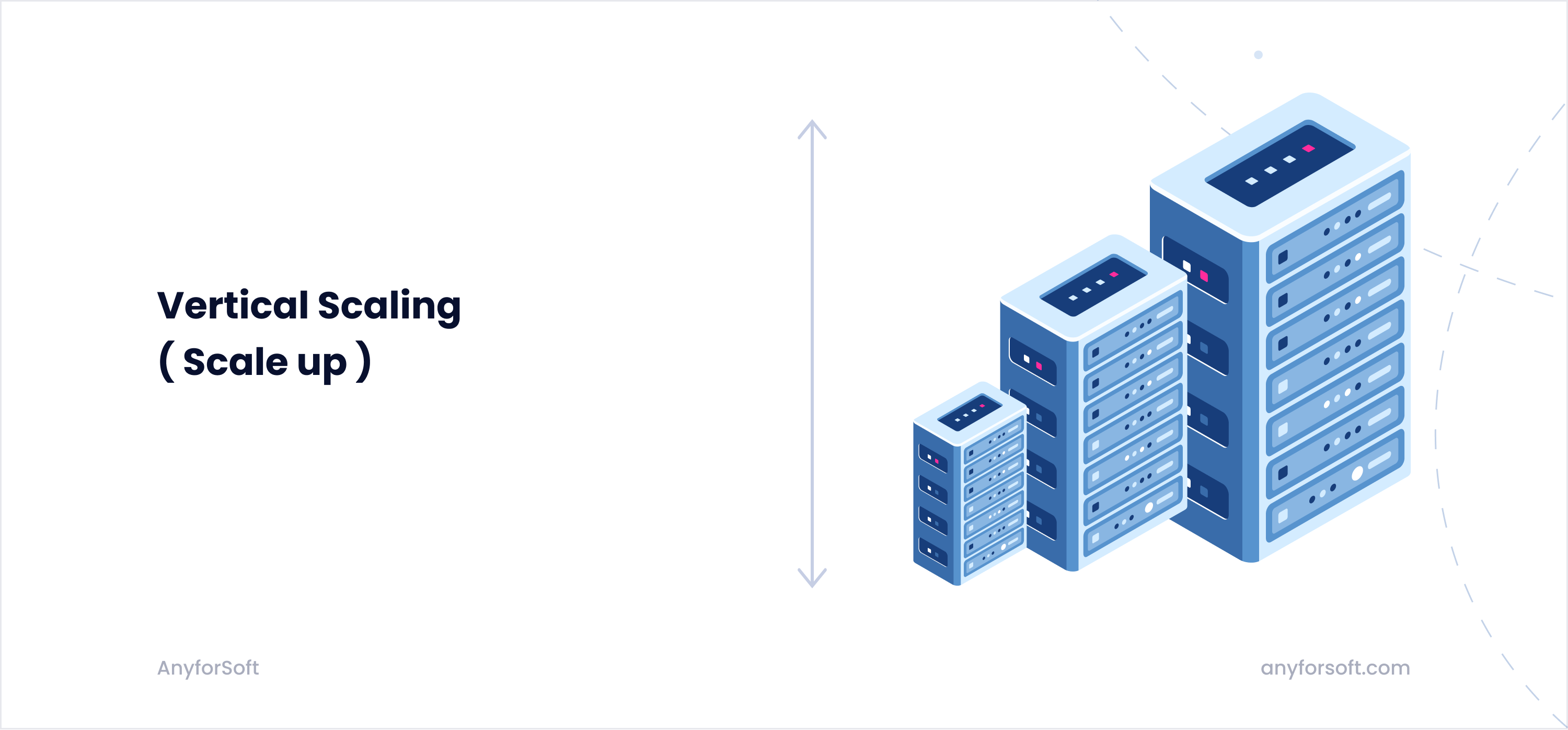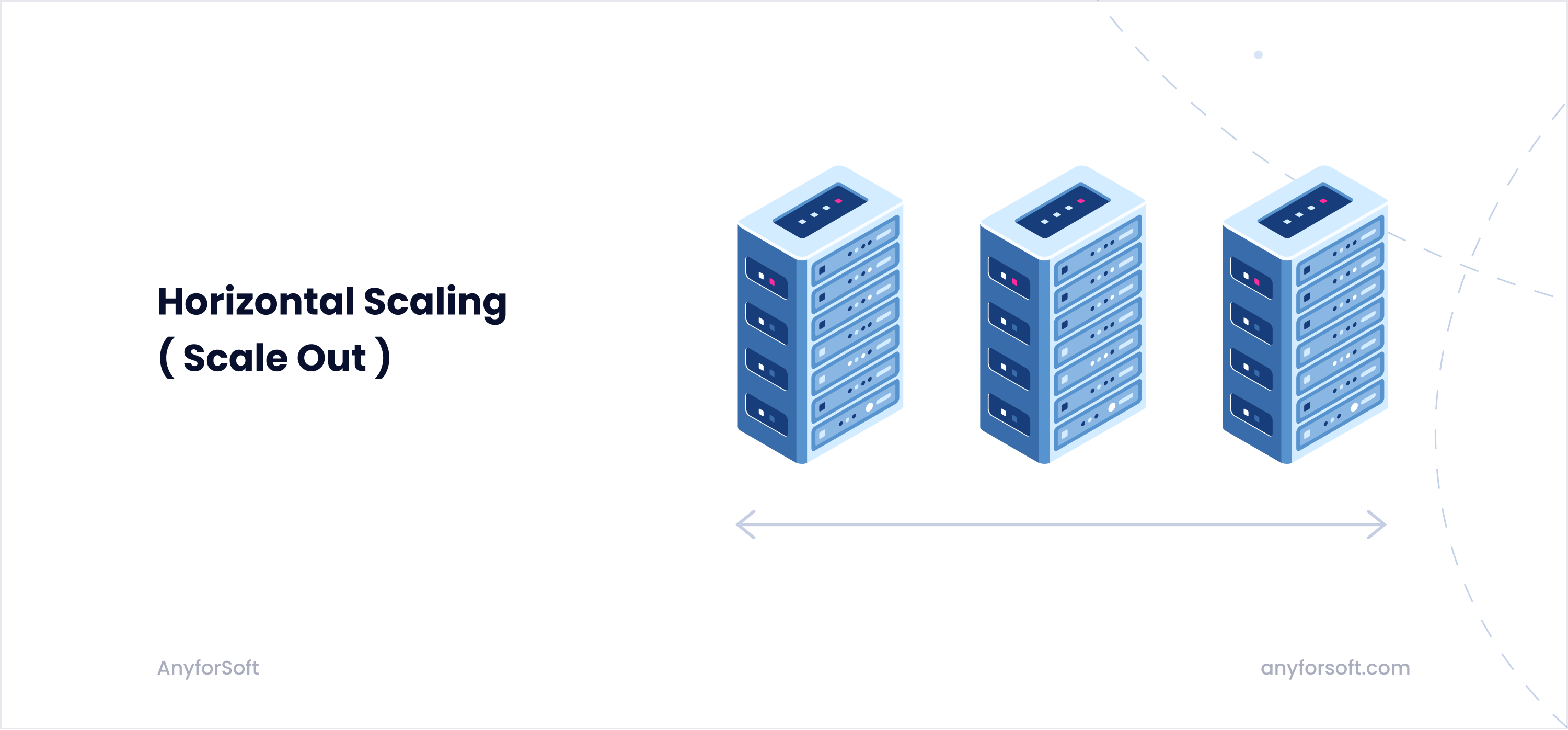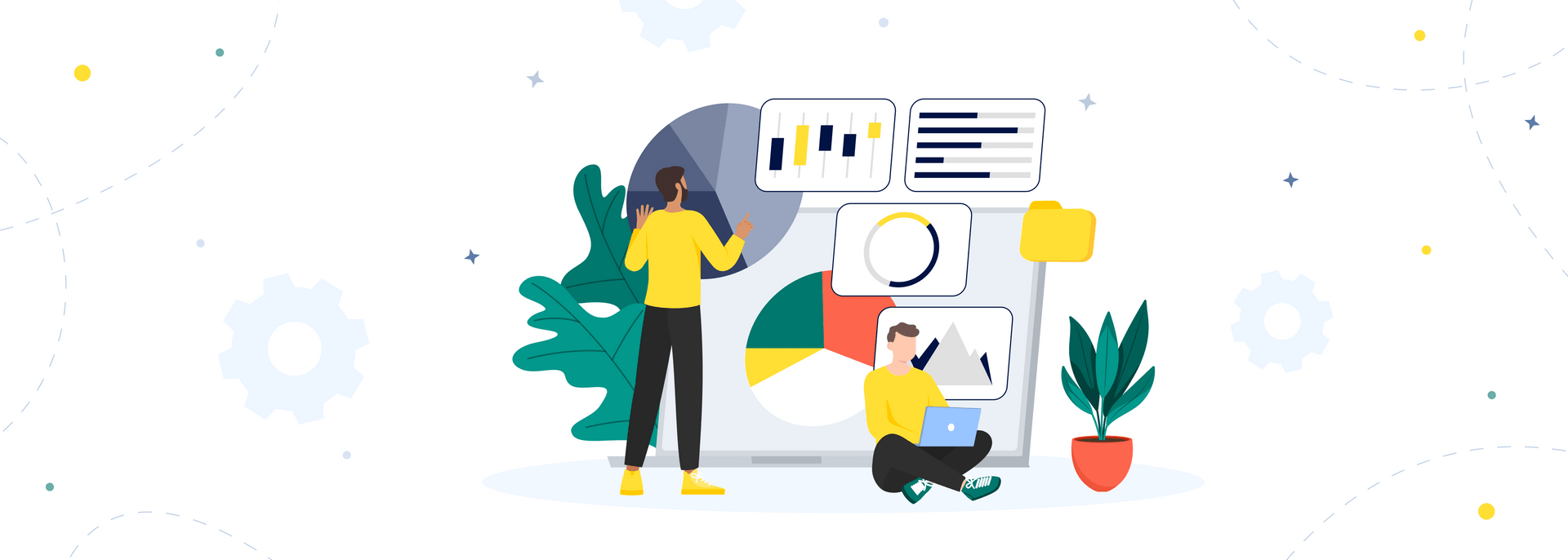Do you plan to scale your software product?
If so, we have good news and bad news for you. Let’s start with the good: the need for product scaling means that your software is successful—you’ve managed to create an in-demand solution and increase your customer base. Well done!
Yet, software scaling can become a real pain in the neck, especially if you don’t know what you’re doing. That’s the bad news.
To help you live through the scaling process and ensure you do everything right, AnyforSoft is here with a brand-new article. In the following paragraphs, we describe valuable tips on how to scale a product so that it meets the ever-growing market needs while continuing to solve your customers’ problems.
Enjoy!
What is Product Scaling?

What does it mean to scale a product?
In simple terms, software product scaling is the process of expanding the software’s capabilities so that it manages to handle the growing requests and demands of your users. The idea behind it is to make your solution robust enough to ensure that it delivers a smooth user experience, covers the expected demands, and can adapt to unexpected ones.
Note that sometimes when people talk about product scaling they imply expanding the capabilities of a business by improving the team, products and services, company infrastructure, marketing strategies, and so on. This article focuses on software scaling.
To clear things up, let’s provide a real-life example.
Enter Chess.com—the most popular platform for playing chess online. The app was doing pretty well until one fateful day in October 2020, The Queen Gambit show was released and changed everything. Soon after that, the popularity of chess skyrocketed, leading to hundreds of thousands of new users creating accounts on Chess.com. That overloaded the platform, causing multiple bugs and even software crashes. Talk about unexpected demands!
So the platform’s creators had only one choice—to scale the product in order to meet the increased demand and not lose their customers. Luckily, this story has a happy ending—the software development team managed to expand their software’s capabilities, and now Chess.com handles over 10,000,000 games daily.
Of course, that’s a very extreme example, but it illustrates the following point perfectly: in order to stay afloat, you should be able to scale your product whenever such a need arises.
Keep reading to learn more.
Types of Product Scaling
You can scale software products by using vertical scaling (also called scale-up) or horizontal scaling (or scale-out). The difference between the two lies in the way they are implemented.
Vertical Scaling

Vertical scaling involves adding more resources to an existing server to improve its capabilities. For instance, you may increase its RAM. CPU, disk capacity, and so on. In some cases, you change the server entirely to receive the one with better specifications and upgrading options.
Pros:
- Faster response times due to no synchronized nodes across multiple servers.
- Less room space is required compared to horizontal scaling (power bills are also lower).
- Better data consistency and integrity as everything runs on a single node.
- Easy to implement since there is no need to use load balancers.
Cons:
- Upgrading options are limited since each device has a threshold for RAM, storage, and processing power.
- Connecting your software to a new server requires you to shut the system down for a while.
- Higher possibility of service downtime as you rely on one machine that acts as a single point of failure (SPOF).
- Increased risk of permanent data loss since all the data is stored on one server.
Horizontal Scaling

Scaling your product horizontally implies creating an architecture in which the workload is evenly distributed among multiple servers by a load balancer. So instead of switching to a more powerful server or buying better components as you do in vertical scaling, you simply add more servers to increase your software’s capabilities.
Pros:
- No SPOFs as your data is distributed among many servers. If one of the servers goes down, your system will continue operating.
- No limits in terms of RAM, CPU, disk space, and so on. You’re limited only by budget and data center space.
- You can keep the software on while scaling.
- No risk of permanent data loss.
Cons:
- In order for the system to work, you have to add software for load balancing and ensure nodes synchronize effectively, which is challenging and time-consuming.
- The more servers you add, the more complex the server management gets.
- If the cluster is poorly optimized, your software might work slowly.
- Each new server requires some space, cooling, and power. If you’re not careful, your expenses may spiral out of control.
- When scaling products horizontally, data consistency may become an issue due to cross-server communication.
Overall, vertical scaling will suit you if you know exactly how much more workload your software needs to address. Alternatively, horizontal scaling comes in handy when you don’t know the workload the software will need to handle in the future. Also, note that with a horizontal product scale, you will be able to scale down whenever you want, which is not the case with vertical scaling. On the other hand, scaling a product vertically is much cheaper and easier to implement.
Now that you know all this, let’s talk about when you should consider scaling your product.
When to Scale Your Product
Premature scaling is a common mistake that many software creators make. They invest in high-end hardware before their product actually requires it, which leads to unnecessary expenses. In order to avoid the same mistake, you should know when to scale your product:
- You expect more software users/website visitors. For example, if you are planning a massive marketing campaign, it’s better to prepare your software product beforehand. Otherwise, it might not handle an influx of new potential customers.
- You’re adding resource-intensive features. It’s time to scale if you’re planning to introduce new features that will require more resources. Say, you want to add a sophisticated recommendation algorithm to your product that needs a powerful CPU to operate. In such a case, upgrading your hardware is only logical.
- Your service is slow. Insufficient memory, irresponsive database, poorly configured technologies—all of these issues badly affect your performance. If you noticed that your software works slowly, it’s probably time to scale it.
- You experience bottlenecks. Any system is composed of multiple different parts. A bottleneck is a part that limits the performance or capacity of the whole product. It might indicate that the workload is distributed poorly or that some centers require more resources to process requests than others. Whatever the case, you should consider scaling your product to balance the workload and avoid potential bottlenecks.
If that’s clear, let’s finally move to the main part of our article.
How to Scale Your Product
Here are valuable tips to scale your product.
Tip 1: Split Your Services
The first rule of smart scaling is to split your services to avoid SPOFs (single points of failure). We already mentioned this term above but didn’t actually explain it. So SPOF is a hardware or software component that the entire system relies on. If an error with the component occurs, the entire system goes down, which is why it is called a single point of failure. There are multiple categories of SPOFs, including hardware failures (server crashes), software failures, database issues, and so on.
When scaling your software, you should strive to avoid SPOFs as much as possible. In order to do so, split your software architecture into small manageable parts. Not only will this allow you to avoid SPOFs, but you also will be able to scale the most problematic parts rather than the entire system, which will minimize scaling costs.
Tip 2: Scale Horizontally, Not Vertically
Vertical scaling has multiple advantages. However, this approach is limited, as even the most expensive servers have thresholds for RAM, CPU, disks, and other components. So if you’re aiming high, why limit yourself?
Moreover, horizontal scaling has become even more convenient with the advent of cloud services. Today, you don’t even need to do anything. Most cloud providers use pay-as-you-go pricing models and automatically scale your product whenever such a need arises. For example, if your application requires more servers at some point, your cloud provider will notice it and add more hardware so that you can operate without errors.
Tip 3: Use Caching
If you have experience in digital product development, you should be familiar with the concept of caching. In simple terms, caching is the process of storing and accessing data from a cache. A cache is a component that stores data so that future requests for that data can be served faster. Simple example: when you visit a certain website for the first time, you have to wait for its UI elements to load. However, when you visit again, UI is already preloaded from the cache, so it loads almost instantly.
By caching repetitive and expensive database queries, slow computations, and page renders, you will improve the system’s performance while reducing its workload.
Tip 4: Opt for Client-Side Sessions and Use APIs
Another method to reduce workload and contribute to the system’s performance is to push workload to clients. If you do this, they will send fewer requests to your server. For example, rather than starting server-side sessions for authentications, use client cookies and JSON Web Token (JWT) so that the authentication is processed on the client side.
As for APIs, developing them for your backend is another solution to help you scale your application. More specifically, you can design your software as a set of services that your customer will consume as APIs. That will help you improve scalability.
Tip 5: Use the Right Databases
You can choose between two types of databases: relational database management systems (SQL) and non-relational (NoSQL). The choice should be dictated by the type of scaling you’re going to use. SQL databases are vertically scalable in most cases. So if you plan to use a single server and simply upgrade it when the need arises, SQL is your choice. NoSQL databases are horizontally scalable. They allow data sharding for faster query response. Since we recommend scaling horizontally, we would opt for NoSQL databases. However, if your business requirements dictate otherwise, using SQL solutions is totally fine.
Conclusion
Now you know more about product scaling. We hope this article has cleared things up for you and given you an idea of what to do.
In case you don’t have your own development team to help you with the process, you can rely on AnyforSoft. As a product development company with 11 years of experience, we are well-versed in multiple programming languages and frameworks, which allows us to scale virtually any software product.
Contact us today and tell us more about your project so that we can assist you!
FAQs
You should scale your product in one of the following cases:
- You expect an influx of new customers or software users.
- You’re planning to add resource-intensive features that will require more CPU, RAM, disk space, or other resources.
- Your service is slow and you want to improve its performance.
- You experience bottlenecks that compromise your entire system’s performance.
You can learn more by scrolling up to the When to Scale Your Product section of the article.
You should scale your product in one of the following cases: You expect an influx of new customers or software users. You’re planning to add resource-intensive features that will require more CPU, RAM, disk space, or other resources. Your service is slow and you want to improve its performance. You experience bottlenecks that compromise your entire system’s performance. You can learn more by scrolling up to the When to Scale Your Product section of the article.
Technically, you can scale any software. Some products will require more drastic changes than others, but yes, any product can be scaled by a development team.
Technically, you can scale any software. Some products will require more drastic changes than others, but yes, any product can be scaled by a development team.
